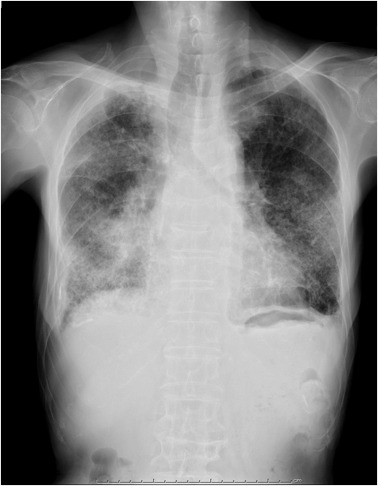Moraxella catarrhalis is a Gram-negative bacterium known to cause respiratory tract infections, including chronic bronchitis. While often considered a commensal organism, it can become pathogenic in individuals with underlying lung conditions, particularly those with chronic obstructive pulmonary disease (COPD). This article provides a comprehensive overview of Moraxella catarrhalis chronic bronchitis, covering its causes, symptoms, diagnosis, and treatment options.

Understanding Chronic Bronchitis and Moraxella Catarrhalis
Chronic bronchitis is characterized by persistent inflammation of the bronchi, leading to mucus production, coughing, and breathing difficulties. Infections by bacteria such as Moraxella catarrhalis exacerbate the condition, increasing the severity and frequency of symptoms.
Role of Moraxella Catarrhalis in Chronic Bronchitis
Moraxella catarrhalis is an opportunistic pathogen that primarily affects immunocompromised individuals or those with chronic respiratory conditions. It contributes to chronic bronchitis through:
- Increased Mucus Production: The bacterium triggers excessive mucus secretion, leading to airway obstruction.
- Inflammation: It induces inflammation, worsening symptoms such as coughing and wheezing.
- Biofilm Formation: Moraxella catarrhalis can form biofilms, which enhance its resistance to antibiotics and immune responses.
Causes and Risk Factors
Several factors increase the likelihood of Moraxella catarrhalis infection in individuals with chronic bronchitis:
- COPD and Lung Diseases: People with pre-existing lung conditions are more susceptible.
- Smoking: Weakens the immune system and damages the respiratory tract.
- Weakened Immunity: Age, chronic diseases, or immunosuppressive therapy can heighten risk.
- Environmental Exposure: Air pollution and occupational hazards contribute to bacterial infections.
Symptoms of Moraxella Catarrhalis Chronic Bronchitis
Symptoms of chronic bronchitis exacerbated by Moraxella catarrhalis include:
- Persistent cough with thick mucus
- Shortness of breath and wheezing
- Chest tightness and discomfort
- Fever and fatigue in severe cases
- Increased frequency of respiratory infections
Diagnosis
Clinical Evaluation
A thorough medical history and physical examination are essential in diagnosing chronic bronchitis linked to Moraxella catarrhalis.
Laboratory Tests
- Sputum Culture: Identifies Moraxella catarrhalis in respiratory secretions.
- Polymerase Chain Reaction (PCR): Detects bacterial DNA for accurate diagnosis.
- Blood Tests: Assesses infection markers like white blood cell count and C-reactive protein (CRP).
- Pulmonary Function Tests (PFTs): Evaluates lung function and airflow obstruction.
Treatment Options
Antibiotic Therapy
Moraxella catarrhalis exhibits resistance to beta-lactam antibiotics due to beta-lactamase production. Effective antibiotics include:
- Macrolides (e.g., Azithromycin, Clarithromycin)
- Fluoroquinolones (e.g., Levofloxacin, Moxifloxacin)
- Beta-lactam/Beta-lactamase Inhibitors (e.g., Amoxicillin-Clavulanate)
Symptomatic Treatment
- Bronchodilators: Improve airflow and reduce wheezing.
- Corticosteroids: Reduce inflammation in severe cases.
- Expectorants and Mucolytics: Help clear mucus from the airways.
- Oxygen Therapy: Beneficial for patients with advanced COPD.
Prevention Strategies
Vaccination
- Pneumococcal and Influenza Vaccines: Reduce the risk of respiratory infections that can exacerbate chronic bronchitis.
Lifestyle Modifications
- Smoking Cessation: Reduces inflammation and infection risk.
- Air Quality Improvement: Use air purifiers and avoid pollutants.
- Regular Exercise: Strengthens respiratory muscles and enhances lung capacity.
Hygiene Practices
- Frequent handwashing to prevent bacterial transmission
- Avoiding close contact with infected individuals
Moraxella catarrhalis chronic bronchitis is a serious condition requiring prompt diagnosis and targeted treatment. Individuals with COPD or other respiratory diseases should take preventive measures to reduce their risk of infection. With appropriate medical intervention, lifestyle modifications, and preventive strategies, the impact of this bacterial infection can be minimized.

